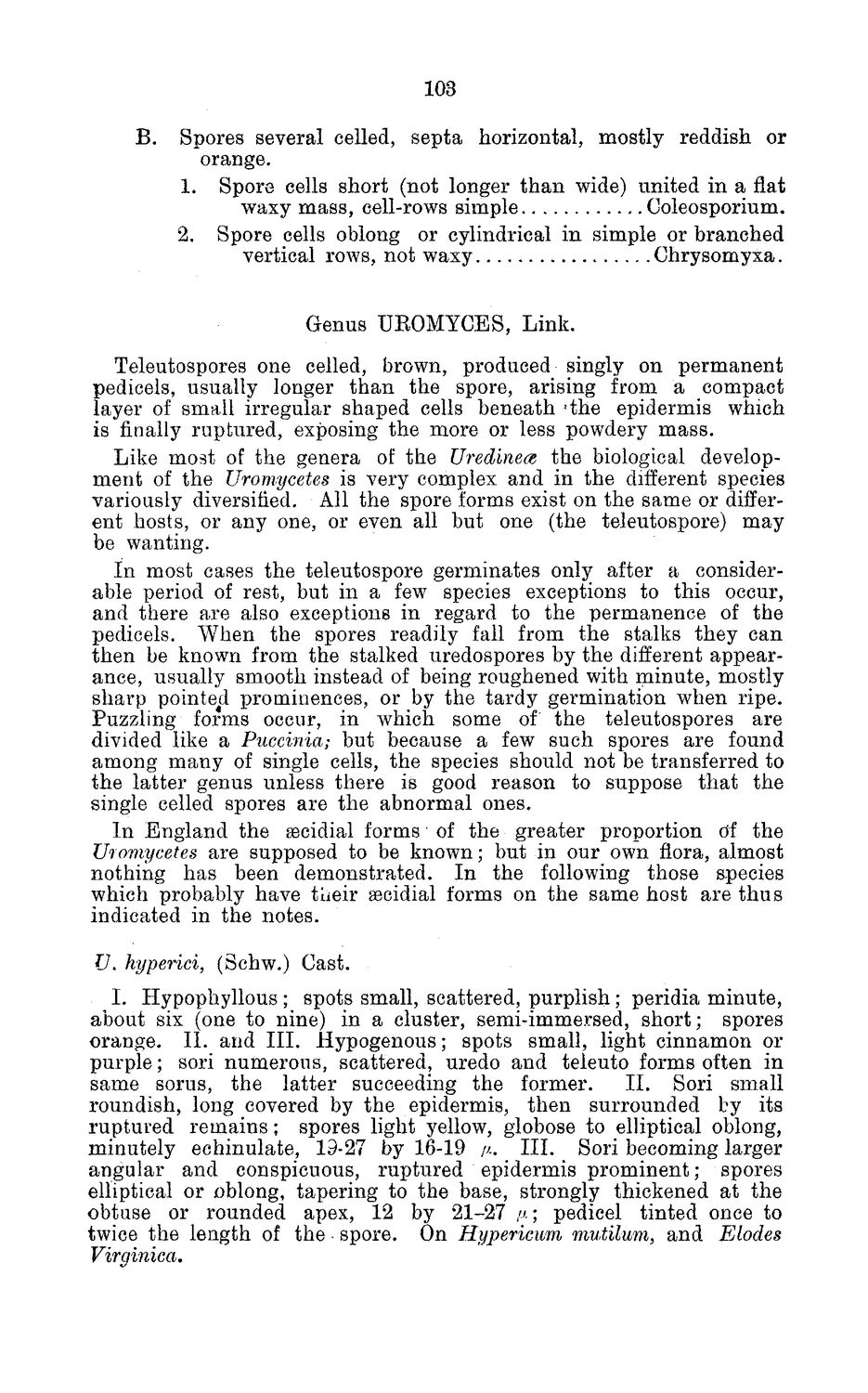| |
| |
Caption: Board of Trustees Minutes - 1884
This is a reduced-resolution page image for fast online browsing.

EXTRACTED TEXT FROM PAGE:
103 B. Spores several celled, septa horizontal, mostly reddish or orange. 1. Spore cells short (not longer than wide) united in a flat waxy mass, cell-rows simple Coleosporium. 2. Spore cells oblong or cylindrical in simple or branched vertical rows, not waxy Chrysomyxa. Genus UEOMYCES, Link. Teleutospores one celled, brown, produced singly on permanent pedicels, usually longer than the spore, arising from a compact layer of small irregular shaped cells beneath 'the epidermis which is finally ruptured, exposing the more or less powdery mass. Like most of the genera of the Uredinea the biological development of the Uromycetes is very complex and in the different species variously diversified. All the spore forms exist on the same or different hosts, or any one, or even all but one (the teleutospore) may be wanting. In most cases the teleutospore germinates only after a considerable period of rest, but in a few species exceptions to this occur, and there are also exceptions in regard to the permanence of the pedicels. When the spores readily fall from the stalks they can then be known from the stalked uredospores by the different appearance, usually smooth instead of being roughened with minute, mostly sharp pointed prominences, or by the tardy germination when ripe. Puzzling forms occur, in which some of the teleutospores are divided like a Puccinia; but because a few such spores are found among many of single cells, the species should not be transferred to the latter genus unless there is good reason to suppose that the single celled spores are the abnormal ones. In England the secidial forms of the greater proportion df the Uromycetes are supposed to be known; but in our own flora, almost nothing has been demonstrated. In the following those species which probably have their seeidial forms on the same host are thus indicated in the notes. V. hyperici, (Schw.) Cast. I. Hypophyllous ; spots small, scattered, purplish; peridia minute, about six (one to nine) in a cluster, semi-immersed, short; spores orange. II. and III. Hypogenous; spots small, light cinnamon or purple; sori numerous, scattered, uredo and teleuto forms often in same sorus, the latter succeeding the former. II. Sori small roundish, long covered by the epidermis, then surrounded by its ruptured remains; spores light yellow, globose to elliptical oblong, minutely echinulate, 19-27 by 16-19 /*. III. Sori becoming larger angular and conspicuous, ruptured epidermis prominent; spores elliptical or oblong, tapering to the base, strongly thickened at the obtuse or rounded apex, 12 by 21-27 /*; pedicel tinted once to twice the length of the spore. On Hypericum mutilum, and Elodes Virginica.
| |